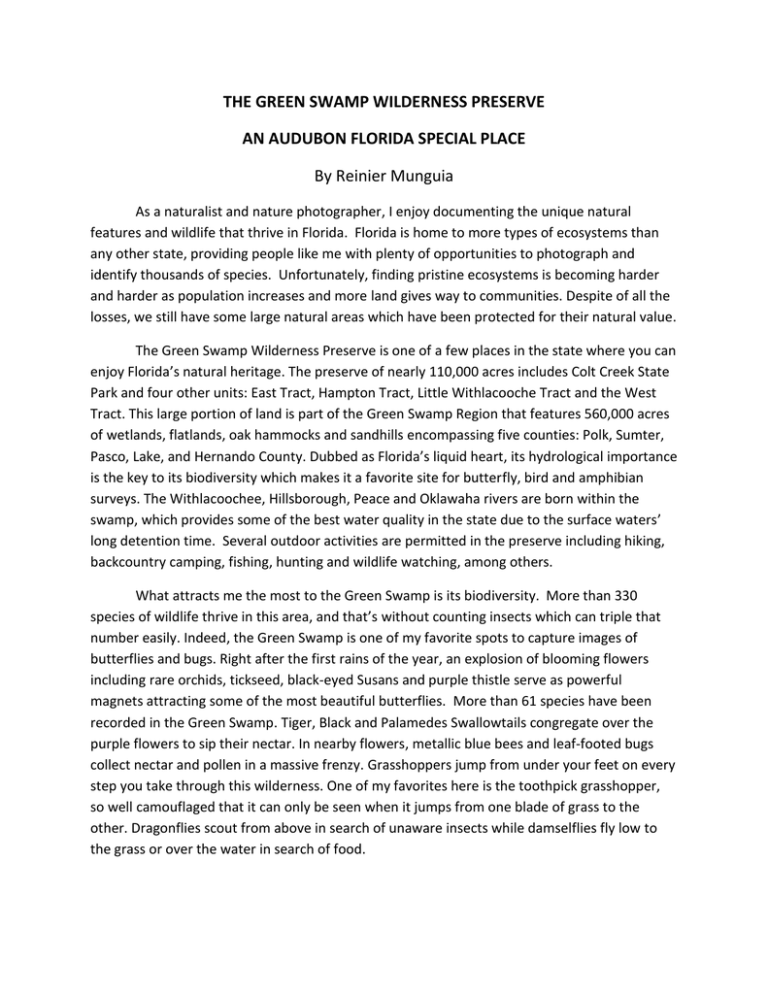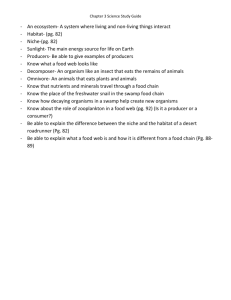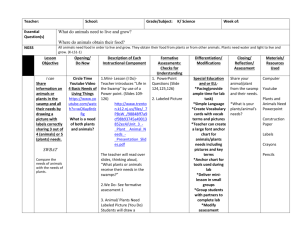
THE GREEN SWAMP WILDERNESS PRESERVE
AN AUDUBON FLORIDA SPECIAL PLACE
By Reinier Munguia
As a naturalist and nature photographer, I enjoy documenting the unique natural
features and wildlife that thrive in Florida. Florida is home to more types of ecosystems than
any other state, providing people like me with plenty of opportunities to photograph and
identify thousands of species. Unfortunately, finding pristine ecosystems is becoming harder
and harder as population increases and more land gives way to communities. Despite of all the
losses, we still have some large natural areas which have been protected for their natural value.
The Green Swamp Wilderness Preserve is one of a few places in the state where you can
enjoy Florida’s natural heritage. The preserve of nearly 110,000 acres includes Colt Creek State
Park and four other units: East Tract, Hampton Tract, Little Withlacooche Tract and the West
Tract. This large portion of land is part of the Green Swamp Region that features 560,000 acres
of wetlands, flatlands, oak hammocks and sandhills encompassing five counties: Polk, Sumter,
Pasco, Lake, and Hernando County. Dubbed as Florida’s liquid heart, its hydrological importance
is the key to its biodiversity which makes it a favorite site for butterfly, bird and amphibian
surveys. The Withlacoochee, Hillsborough, Peace and Oklawaha rivers are born within the
swamp, which provides some of the best water quality in the state due to the surface waters’
long detention time. Several outdoor activities are permitted in the preserve including hiking,
backcountry camping, fishing, hunting and wildlife watching, among others.
What attracts me the most to the Green Swamp is its biodiversity. More than 330
species of wildlife thrive in this area, and that’s without counting insects which can triple that
number easily. Indeed, the Green Swamp is one of my favorite spots to capture images of
butterflies and bugs. Right after the first rains of the year, an explosion of blooming flowers
including rare orchids, tickseed, black-eyed Susans and purple thistle serve as powerful
magnets attracting some of the most beautiful butterflies. More than 61 species have been
recorded in the Green Swamp. Tiger, Black and Palamedes Swallowtails congregate over the
purple flowers to sip their nectar. In nearby flowers, metallic blue bees and leaf-footed bugs
collect nectar and pollen in a massive frenzy. Grasshoppers jump from under your feet on every
step you take through this wilderness. One of my favorites here is the toothpick grasshopper,
so well camouflaged that it can only be seen when it jumps from one blade of grass to the
other. Dragonflies scout from above in search of unaware insects while damselflies fly low to
the grass or over the water in search of food.
Many visitors will be surprised to find that despite its name, water is not easy to find
except near creeks and in ephemeral ponds during the rainy season. Most of the water travels
through underground limestone which acts as a sponge and is undetected by the naked eyes.
Cypress domes mark water deposits along vast grassy plains, an oasis sought by wildlife. Here
you can spot deer and turkeys in the early morning which find a relief during the summer
months in these oases. During the rainy season, even the pine flatwoods may be flooded
temporarily, giving room for various species of frogs to breed away from the creeks where
predators abound. Southern leopard frogs, Eastern Narrowmouth Toads and cricket frogs are
among the most common ground amphibians you will encounter. In the trees and over masses
of pickerel weed, you’ll find Green Treefrogs, Squirrel Treefrogs and Barking Treefrogs. Where
there are frogs, you’ll find snakes. Several species including a few venomous ones like the
Cottonmouth, Diamondback Rattlesnake and the Coral Snake, and many non-venomous species
such as the Yellow Rat, Corn Snake and the Blue-sided Garter Snake call the swamp home.
When it comes to birds, this place offers a magnificent viewing experience.
Prothonotary and Pine Warblers, Carolina Chickadees and White-eyed Vireos breed here, and
so do various raptor species including the Swallow-tailed Kite and the Red-tailed Hawk. When
flooded, the swamp attracts species of waders including Wood Storks, Great Blue Herons and
various species of egrets which arrive to take advantage of fish trapped in shallow pools. These
events attract other wildlife including bobcats, black bears, opossums, raccoons and even the
Florida Panther.
Besides its hydrological importance, this vast landscape is the home for many species
currently under threat by nearby development and encroachment. The Green Swamp is the
largest protected wetland area in the State after the Everglades National Park and perhaps the
one with the highest biodiversity. If you want to experience what natural Florida has to offer,
the Green Swamp is a good start.
This column is one of a series from Audubon Florida. Reinier Munguia is President, Lakes Region
Audubon Society. For more information about the Green Swamp Wilderness Preserve visit
www.swfwmd.state.fl.us/recreation/areas/greenswamp.html. For more about AUDUBON FLORIDA and
its “Special Places” program visit www.FloridaSpecialPlaces.org. All rights reserved Florida Audubon
Society, Inc.
Toothpic Grasshopper by Reinier Munguia
The Green Swamp by Reinier Munguia
Yellow Rat Snake by Reinier Munguia








